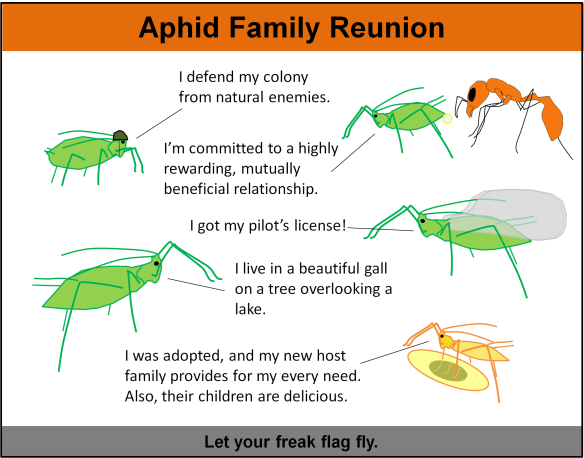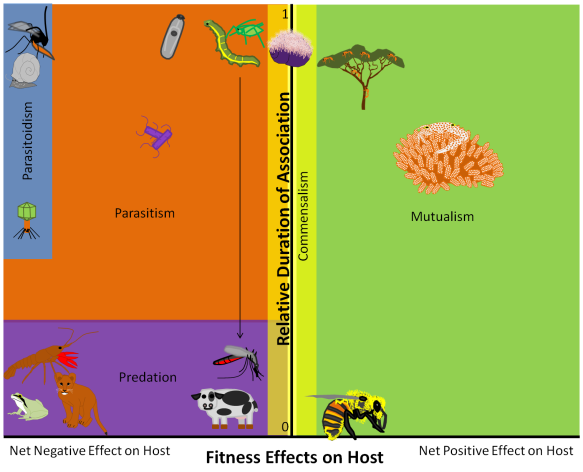Ants are involved in an astounding diversity of symbiotic relationships: they pollinate flowers, they disperse seeds, they farm fungi, they defend trees and insects from natural enemies, etc. Those are some very diverse services! But of course, even when the ants are dutifully performing those services, the ants don’t necessarily benefit their partners. For instance, ants may also sterilize their host plants or eat some of the aphids that they are tending for honeydew. Furthermore, the net outcome for the ants’ partners may be context specific, where the costs and benefits of interacting with ants vary with ecological and environmental conditions. For instance, if you’re an Acacia tree, having ants around to protect you from elephants may be very beneficial, but only if you live in an area that actually has elephants.
Here’s a different question: do ants always benefit from their relationships with their partners? Ants appear to be the decision makers in many of these relationships, where trees and aphids and scale insects and fungi seem less capable of making active decisions to participate (or not) in the relationship. But it turns out that ant partners aren’t as passive as they seem, because they can often use “rewards” and/or “sanctions” to control ants. For example, trees can ‘decide’ how many domatia to produce or whether to produce extrafloral nectar, which in turn determines whether ants will be attracted to the tree. (For an example of a cool sanction, check out this system, where hosts eat their symbionts when the symbionts aren’t beneficial!)
Ants can also experience negative effects of symbiotic interactions when they are tricked by mimic species or individuals called “cheaters.” In fact, there are many neat insect species that trick ants. I really want to go crazy and devote a six page blog post to all of my favorite ones, but here are just two:
1) The lacewing larva that wears aphids: Yes, for real. Lacewing larvae eat aphids, but that can be hard to do when the aphids are protected by ants. So, these lacewing larvae have evolved to wear aphid carcasses (or the cottony-fluff that aphids create) like the proverbial sheep suit worn by the wolf. The ant defenders can’t detect the difference between the aphids and the lacewings in aphid clothing, so the lacewings get to sneak onto the aphid farm to feast without being chased off.
2) Aphids that aggressively mimic ants: A single species of aphid can often have several distinct phenotypes. For instance, there are phenotypes with wings that disperse across relatively long distances and wingless phenotypes that don’t disperse very far. In some aphid species, there are phenotypes that reproduce, and other soldier phenotypes that never reproduce and protect the colony from natural enemies. Finally, in the species Paracletus cimiciformis, there is a green, pot-bellied aphid phenotype that has a typical symbiotic relationship with ants, where the ants protect and clean the root-dwelling aphids in return for honeydew. There is also a second phenotype that is flatter and yellow-ish, with hydrocarbons in the cuticle that are similar to the hydrocarbons in ant larvae (Salazar et al. 2015). When adult ants find aphids with the flat phenotype, the ants carry the aphids back to the ant nest, and plop the aphids onto the piles of ant larvae. From there, the aphids feed on the hemolymph of the ant larvae using their piercing/sucking mouthparts! So, the aphids get to hang out in the protective environment provided by the ant nest while sucking on baby ant juices, and they don’t have to do anything in return. Awesome.

References:
Salazar, A., B. Furstenaub, C. Quero, N. Perez-Hidalgo, P. Carazo, E. Font, D. Mantinez-Torres. 2015. Aggressive mimicry coexists with mutualism in an aphid. PNAS 112(4): 1101-1106.


